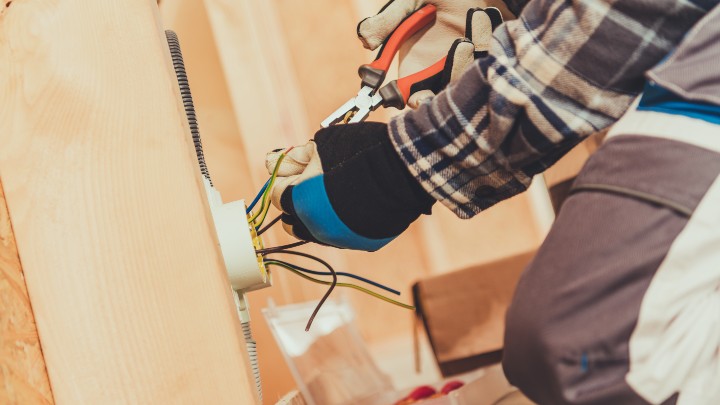Want to share feedback? Contact us.
Many people from typical households have no idea when it comes to electrical wiring, which is why they are unaware of the unsafe conditions in their electrical system. To reduce the likelihood of electrical shock and fire, you should not be so quick in connecting both the neutral and ground wire.
Let’s go over why the practice of connecting the two wires is not safe.
Here’s What Happens if Neutral and Ground Are Tied Together:
Connecting both the neutral and ground wire in the sub panel is dangerous since this would result in the ground wire becoming a live wire which can start a fire or cause an electrical shock upon contact. The wires should only be connected to the main panel’s last disconnect point.
Standard wiring comprises three wires, namely hot, neutral, and ground. For appliances to work, it needs both hot wires and neutral wires; the ground wire is not required since it is only a safety feature. The hot wire carries the electricity to the appliances, while the neutral wire serves as a return path and carries the unused electricity back to the electrical source.
Under normal circumstances, ground wires do not carry electrical currents because it serves as a safety feature that provides an alternate path for the excess electrical charges to flow safely towards the breaker, not through you, in case a short circuit occurs.
Connecting the two wires defeats the said purpose of the ground wire since electricity going through the neutrals will also be shared by the ground wire. Thus it will now start carrying electricity and become a live wire.
Since the ground wire is now a live wire, it will energize your appliances’ metallic cases, increasing the risk of electrocution. An example of this is your refrigerator since its case is mostly metallic, and once you come in contact with its handle, the electricity will flow through your body and can cause a fatal shock.

Can Neutral and Ground Be on the Same Bus Bar?
You first need to identify whether the bus bar is from the sub-panel or the main panel to answer this question. If it pertains to the bus bar from the sub panel, the answer is no. The neutral and ground should never be on the same bus bar.
According to the National Electrical Code, the neutral and ground should never be connected on the same bus bar and kept separated elsewhere, except the main panel. This is because there should only be one return path for the electricity (neutral wire); however, if they are on the same bus bar, there will be two return paths dividing the flow of electricity.
Imagine a sudden abnormal surge in electricity. All of it should have gone to the breaker and tripped it, protecting and notifying you that there is something wrong with your electrical system. On the other hand, if the return path is divided, the breaker will not trip, leaving you unaware of the electrical fault until it’s too late and you come in contact with a metallic appliance and electrocute yourself.
Why Do You Have to Bond the Neutral and the Ground Wire in the Main Panel?
Bonding the neutral and ground wire in the main panel is important for the circuit breaker to function properly. A problem could continue without triggering a circuit breaker to cease the electricity if there isn’t a quick and drastic rise in electrical current.
Bonding is the intentional development of an electrically conductive low impedance conduit connecting all metal portions of a circuit back to the circuit’s electrical source. It is done to quickly open overcurrent protective devices to clear ground faults.

When electrical current flows through a circuit breaker at a sufficiently high level, it is designed to shut off the electricity. Allowing electricity to run through these metal pieces is exceedingly dangerous, so we need a mechanism to turn off the current when this occurs. By bonding the equipment grounding wires to the system neutral, there is now a route back to the transformer that supplied the power. This permits a complete circuit to be established, allowing current to flow in a complete circle from source to the breaker, back to the source, not merely from the source to the earth.
In other words, in a ground fault, electrical equipment connected to the earth may not blow a fuse or trip a breaker and stay energized!
Sources:
